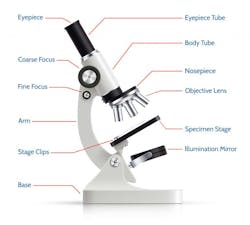Optical Component Manufacturing: Designing and Assembling Objective Lenses for Microscopes
Avantier is a renowned company specializing in the design and assembly of objective lenses for microscopes. With a commitment to innovation and precision, Avantier has established itself as a leading provider of high-quality optical solutions for various scientific and industrial applications.
Avantier’s objective lens design process begins with a deep understanding of customer requirements and the intended application. Their team of experienced optical designers works closely with clients to determine the optimal specifications, including magnification, numerical aperture, field of view, and working distance. This collaborative approach ensures that the objective lenses are tailored to meet specific imaging needs.
Using advanced manufacturing techniques, Avantier produces optical components with exceptional precision. Their state-of-the-art facilities are equipped with cutting-edge machinery for precise machining, shaping, and polishing of glass elements. Quality control measures are implemented throughout the manufacturing process to ensure the highest level of accuracy and consistency.
Avantier recognizes the importance of optical coatings in enhancing the performance of objective lenses. They utilize specialized coating materials and techniques to achieve optimal results. These coatings, such as anti-reflective (AR) coatings and highly reflective metal coatings, minimize light loss and improve image contrast. Avantier also employs ion-assisted deposition techniques to create high-energy coatings that withstand demanding environments.
In the assembly stage, Avantier’s skilled technicians meticulously align and bond the optical components. They employ advanced bonding techniques to ensure precise alignment and long-term stability. Avantier’s commitment to quality is evident in every step of the assembly process, resulting in objective lenses that deliver exceptional imaging performance.
Avantier’s objective lenses are designed for a wide range of applications, including life sciences, materials analysis, and industrial inspection. Their lenses offer superior resolution, clarity, and aberration correction, enabling researchers and professionals to achieve accurate and detailed observations.
Objective lenses are a crucial component of compound and stereo microscopes, digital microscopes, and other optical instruments. These lenses are responsible for magnifying and focusing the image, and their design and assembly play a critical role in the quality of the final product.
One important type of objective lens is the immersion objective, which uses a fluid between the lens and the specimen to improve the resolution and numerical aperture of the lens. Immersion objectives are commonly used in high magnification applications and in specific wavelengths, such as infrared or ultraviolet.
Achromatic objectives are another commonly used type of objective lens that corrects for chromatic aberration. These lenses use a combination of different glass types to reduce the effect of color fringing and improve image quality.
Aberration correction is an important aspect of objective lens design, as it improves the clarity and sharpness of the image. This can be achieved through the use of specific optical components, such as aspherical lenses, or through the use of specialized coatings, such as AR (anti-reflective) coatings.
Optical coatings are also used to improve the performance of objective lenses. These coatings can be made of various materials, such as metals or dielectrics, and are often applied using ion-assisted deposition techniques to achieve high energy and highly reflective coatings.
Another important consideration in objective lens design is the field of view, which refers to the area of the specimen that is visible through the lens. Stereo microscopes typically have a larger field of view than compound microscopes, and digital microscopes may have adjustable fields of view to accommodate different applications.
Long working distance is another important characteristic of objective lenses, particularly in high magnification objectives. This refers to the distance between the lens and the specimen, which can impact the ease of use and flexibility of the microscope.
Infinity correction is a technique used in objective lens design to minimize the effect of aberrations in the intermediate optical path between the objective lens and the eyepiece. This technique can improve image quality, particularly at higher magnifications.
Overall, objective lens design and assembly are critical factors in the performance and quality of optical instruments. By carefully selecting and designing optical components, using specialized coatings, and incorporating techniques such as infinity correction and aberration correction, manufacturers can produce high-quality objective lenses for a variety of applications.
Please contact us if you’d like to schedule a free consultation or request for quote on your next project.
